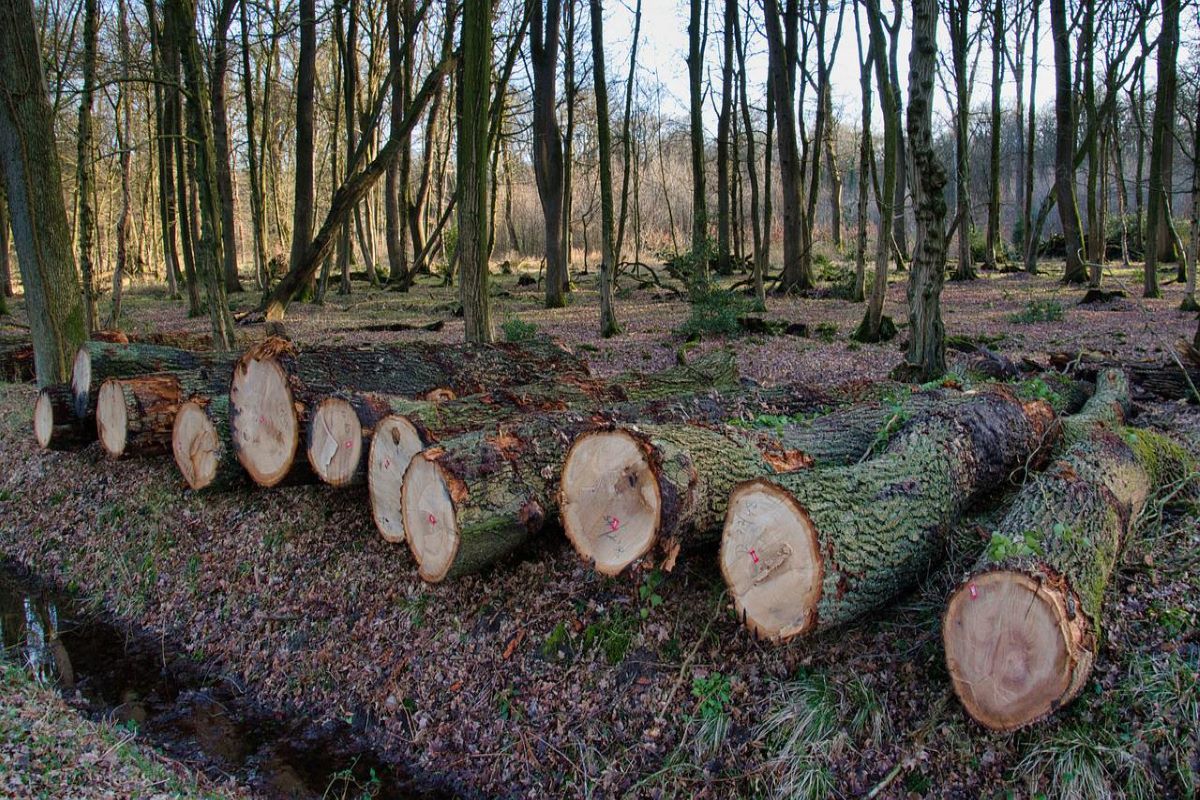It’s common sense that wood should not be thrown away. Wood is a natural resource, can be arranged into many shapes, and has many uses; when it comes to what is recyclable and how much money could be made recycling your wood, it starts to get a little bit complicated. But is wood recyclable?
Yes, wood is recyclable. The main reason why this isn’t a common answer is that recycling is not the same thing as being composted. When you recycle, you’re taking your used materials and turning them into new ones, whether that means making more paper or using them for something else. Composting, on the other hand, refers to rotting materials in order to make soil for plants.
Are All Types of Wood Recyclable?
Apart from asking is wood recyclable, people also ask about different kinds of wood. Yes, all types of wood are recyclable.
It might take a little more effort to get rid of old furniture or other items made from solid wood, but it’s possible. In most cases, you can leave the item at your local recycling center and be sure it will be recycled properly. You should also check with your local municipality to see if they have any specific guidelines for how you should dispose of items made from solid wood.
You may like this article: Is Styrofoam Recyclable?
Can Recycled Wood Be Used to Create Furniture?
Now that you know is wood recyclable, you should read about using recycled wood as furniture. Yes! Recycled wood can be used to create furniture.
However, there are some drawbacks to using recycled wood. The biggest drawback is that recycled wood is often not as strong as new wood and will require more frequent maintenance than regular wood furniture. Additionally, because it’s been used before and has been exposed to chemicals in the manufacturing process, it can sometimes have an off-putting smell or an uneven color that doesn’t match other pieces of furniture.
However, if you’re willing to make the investment in time and money into maintaining your furniture, recycled wood is an excellent choice. It’s also environmentally friendly because it reduces waste by reducing landfill space needs, and it can help reduce your carbon footprint by requiring less energy to produce than new materials would require.
Can Wood Be Used in Compost?
Now that you know the answer to is wood recyclable, let’s check if it can be used in compost. Yes, wood can be used in compost. If you’re using it to make a hot compost pile, you’ll need to keep the wood dry and add water if it starts to absorb too much. If you’re using it as mulch, you can use it right away without concern for its condition or how quickly it will decompose.
The main thing to remember when adding wood to your compost is that it should not be wet. You want to keep the wood dry so that it doesn’t rot or attract pests while decomposing, but if it’s too dry, some of its nutrients will leach out into your soil and potentially harm plants growing near your compost area.
What Is Engineered Wood?
Engineered wood is a material that is specially manufactured from trees. It is made by cutting the tree into pieces and then weaving them together, creating a product that has varying properties depending on the type of wood used for its construction.
Depending on the type of tree used and how it is cut, engineered wood can have different properties. For example, engineered wood can be more stable than wood because it has been pre-treated with chemicals that help prevent rot and insects from infesting it.
Engineered wood has also been designed to look like real wood by using different types of stains or pigments. This gives people a sense of connection with their home because they believe their furniture or other items are made from actual trees when they see them in their new home.
Is Engineered Wood Ideal for Furniture?
Engineered wood is ideal for furniture because it can be produced at a cost that makes it affordable, but it also has properties that make it ideal for certain applications.
For example, engineered wood is not only cheaper to produce than other types of wood, but it’s also more rigid and resistant to warping. This means that the strength of engineered wood will last longer than other types of wood while still remaining affordable, which is great news if you’re looking for something that won’t break down as quickly over time.
It also comes with a number of other benefits, including being lighter than most other materials used in furniture production, so you can expect your furniture to feel lighter on your feet and more comfortable to sit on without any additional support needed.
How Should You Dispose of Old Wooden Furniture?
If you’re looking to get rid of your old wooden furniture, there are a few things you should know. First and foremost, don’t just throw it out in the garbage! You can’t just toss away your old wooden furniture as if it were an old paper bag. It’s illegal to do so, and the wood will eventually begin to decompose and ruin your garbage disposal system.
If you want to get rid of your old wooden furniture piece by piece, make sure that you clean it thoroughly before disposing of it. Wooden furniture can be very dirty and greasy. If this is the case with your piece, use a rag or soft cloth to wipe down all surfaces before tossing it in the trashcan.
You may like this article: Can You Recycle Shredded Paper?
Does All Wood Get Infested With Termites?
All wood does get infested with termites, but the question is: how much? The answer is: it depends.
Wood has a lot of different types of pores and crevices that can be home to termites, as well as a wide range of humidity and moisture levels. This means that not all wood will be equally susceptible to infestation. The best way to figure out if your wood is at risk for termite infestation is to look at its quality. If the wood has been left outside for an extended period of time (like if it was stored in the attic), then it’s more likely that your house has been exposed to termites than if you’ve just bought a new house.
If you’re concerned about termites in your home, then you should contact a professional who can help you identify the source of the problem and take care of it.
How to Prevent Mold Growth on Wood?
Mold growth is a common problem in homes, especially when it comes to wooden surfaces. It can be difficult to get rid of mold on wood, but there are some steps you can take to prevent it from growing in the first place.
The first thing you need to do is make sure that the wood you’re using is dry. Mold requires moisture to grow, so try not to leave water standing anywhere near your wood surfaces. If there’s already been a lot of moisture on your wood, it will be harder for mold spores to establish themselves on it.
Next, use an anti-mold product. These products are designed to kill mold spores and fungi without harming any other materials or surfaces in your home. They typically contain bleach or other chemicals that are safe for use around food and people—but they won’t work well if there’s already been too much moisture in the area where you’re applying them!
Finally, keep an eye out for signs that mold has already started growing on your wood surface. If you notice any black spots or other discoloration on your wooden furniture or fixtures (or if any part of it begins rotting away), get those parts professionally cleaned before any more damage occurs.
Conclusion
In the end, recycled wood is certainly better for the environment than standard lumber, but it’s also quite a bit more expensive. It all depends on your priorities. If you can pay more for higher quality material, it’s certainly worth considering, but if price is an object, standard Wood is a perfectly viable alternative.
 Being Human
Being Human




